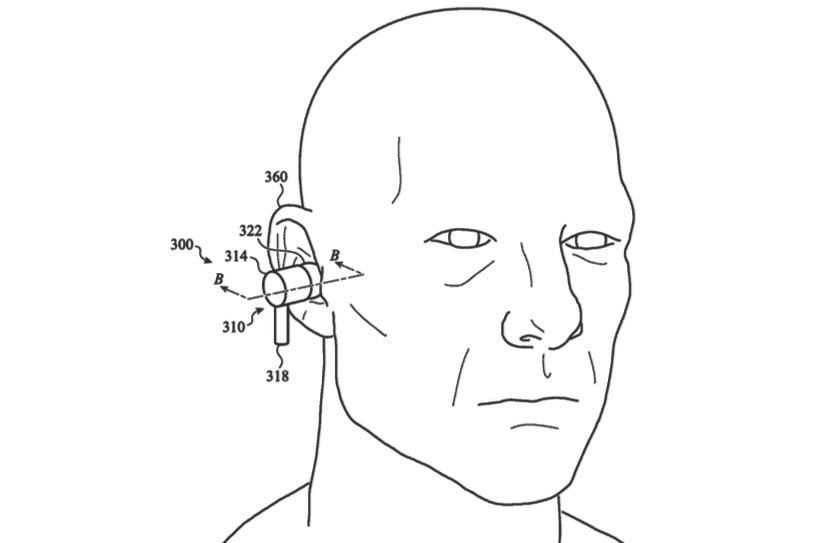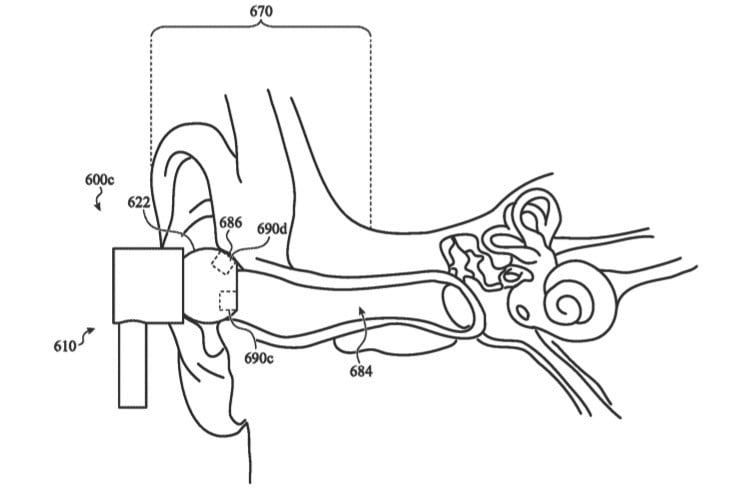The next generation of AirPads can control devices by hitting the body

For some time now, news and rumors have been circulating about the next generation of the incredibly popular AirPad wireless headphones . In fact, most of the published information agrees on a single principle, which is the possibility of changing the design of the AirPad and AirPad Pro and adding new features to this product. Now Apple ‘s new invention shows that the next version of the AirPad or AirPad Pro, can be controlled through a series of movements, none of which will rely on the touch of the headphones themselves; Rather, the commands will be carried out by touching the organs of the body.
-
- Apple will likely unveil the AirPad Pro Lite in the first half of 2021
The US Patent and Trademark Patent, entitled “Body Detection in a Wearable Audio Device,” details ways in which several new sensors can be incorporated into an AirPad or a set of fully wireless headphones. These sensors can detect signals emitted by an individual and execute commands received. These signals can be caused by almost any movement a person can make with their limbs.
 The Cupertinoites claim in their latest invention that commands can be tapped, finger-pressed, or squeezed to execute commands, and they can be applied to the arm or cheek or other parts of the body. For example, to increase the volume, you can do this by dragging your finger up on the cheek, and vice versa, by dragging your finger down, you can reduce the volume. You can also change the song or any content by double-tapping the head; Of course, it should be noted that this process can be different from user personalization.
The Cupertinoites claim in their latest invention that commands can be tapped, finger-pressed, or squeezed to execute commands, and they can be applied to the arm or cheek or other parts of the body. For example, to increase the volume, you can do this by dragging your finger up on the cheek, and vice versa, by dragging your finger down, you can reduce the volume. You can also change the song or any content by double-tapping the head; Of course, it should be noted that this process can be different from user personalization.
Apple notes in its innovative system documentation that movements will not be limited to what we can do with our limbs. In addition, the movement and touch of the tongue and teeth can be used to control the various features of wireless headphones. Apple’s idea for this system is very simple. At the base of the system, two sensors are placed so that they can detect signals sent through the body. These sensors can not only detect that you are hitting your body, but also determine where these commands and touches came from.

Depending on the accuracy of the system, its applications can be very profound and useful. For example, the user’s body can become the only input device to control any device that the headphones need. Smartphones, tablets and laptops are clear and ideal options that can take advantage of this system. In addition, Apple’s HomeKit platform is designed to create a connected smart home ecosystem, and now Siri Smart Assistant is at the heart of that ecosystem; But this patent allows you to control any smart device in the house without the need to speak words and use the body; Therefore, it can be considered a step forward for the user experience in the smart home ecosystem.
According to previous rumors, Apple will probably launch its next generation of iPads in the next billion years. The design of the third-generation AirPad, similar to the current AirPad Pro, is said to have a shorter stem and replaceable silicone pads; But to reduce the price, it will not have advanced features such as active noise cancellation. In addition, Apple is probably working on an updated version of the AirPad Pro with smaller
dimensions and a rounder design.
Finally, it should be noted that even if we are years away from the technology and the interaction with the body to control the devices, Apple’s invention can be an advantage for people with physical disabilities, and it can be easily forgotten that if Do not use your hands or voice, it will be difficult to control the technology; Because the invention has the ability to improve the interaction of all people with adjacent devices by detecting almost every movement that a person makes with his body.
What do you, the users of Zomit, think about Apple’s new invention and its application to humans?






